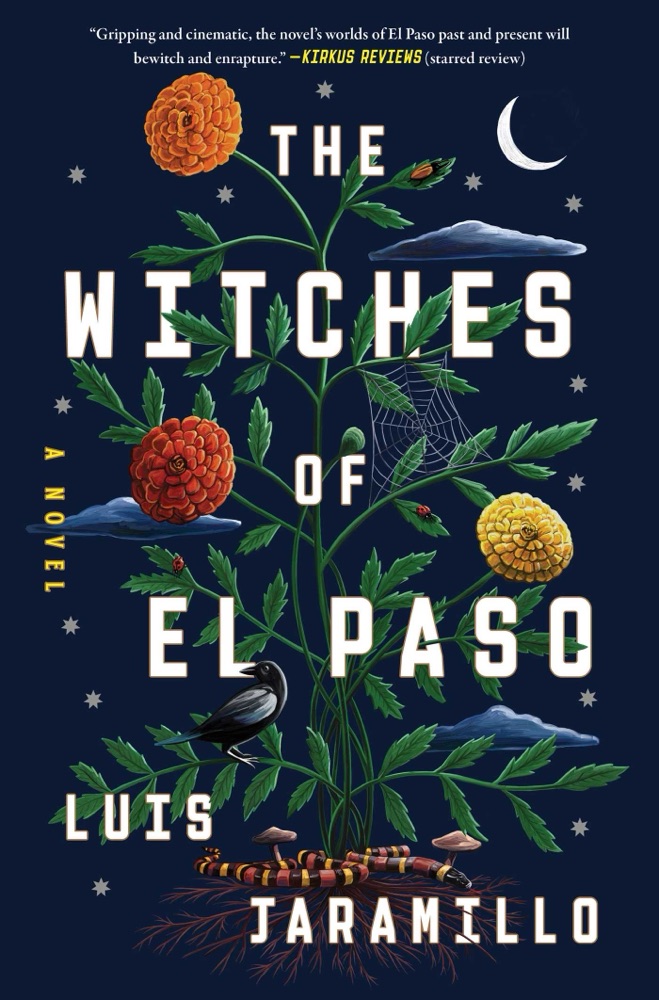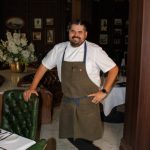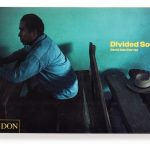By
Erin Coulehan
In The Witches of El Paso, author Luis Jaramillo weaves a spellbinding tale of family, magic, and the unseen borders that shape our lives. Set against the vibrant landscapes of El Paso and colonial Mexico, the story follows teenager Nena in 1943 as she grapples with the frightening premonitions and fainting spells that mark her as different. Longing for adventure, Nena’s prayers are answered when the enigmatic Sister Benedicta appears, pulling her into a world of love, power, and sacrifice that spans lifetimes.
In the present day, Nena’s grandniece Marta struggles to balance her legal aid work, motherhood, and caregiving for the now ninety-three-year-old Nena. When Marta agrees to help Nena find the daughter she left in the past, the two women forge a fierce connection. But as Marta’s own latent supernatural abilities awaken, her carefully constructed life is thrown into turmoil, forcing her to confront the cost—and the beauty—of embracing her full power.
Luis Jaramillo, whose work has appeared in LitHub, BOMB Magazine, and the Los Angeles Review of Books, brings his award-winning storytelling to this poignant exploration of family bonds, cultural heritage, and the magic that connects us all. An assistant professor of creative writing at The New School and a graduate of Stanford University and The New School’s MFA program, Jaramillo invites readers into a world where borders – both visible and invisible – can be crossed, but never without consequence.
The City Magazine caught up with Jaramillo to discuss El Paso, the book, and the power of storytelling.
The City Magazine: Let’s dive right in. What comes to mind when you think about El Paso?
Luis Jaramillo: I think about family, food, the landscape—the big blue sky and the mountains. But most of all, I think about how connected everyone feels to each other. That sense of connection is probably tied to my family history in El Paso.
The City Magazine: El Paso really does have that big, small-town feel. What are some of your favorite memories of being here?
Luis Jaramillo: I grew up in California but visited El Paso every summer. My strongest memories are tied to those hot summer days—the way the mornings felt before it got too warm, and the sound of cicadas. My grandparents had a big yard with trees, and my brother and I would play outside, often having epic water gun fights to stay cool. I also loved going out to eat with my family. We’d go to little restaurants, sometimes after church, or pick up food to bring home. As a kid, I adored Luby’s! There’s nothing like it in California. The idea of choosing whatever food I wanted felt so magical back then.
The City Magazine: I loved Luby’s mac and cheese growing up!
Luis Jaramillo: Yes! It was such a treat.
The City Magazine: You also lived in El Paso for a time, right?
Luis Jaramillo: Yes, I spent first grade here. That year stands out so clearly in my memory. I went to Polk School, which had just opened on the west side. We lived in an adobe house my parents built up the hill. It was designed with passive solar heating, so the walls stayed warm even in winter. I remember walking down the hill to school, and the neighborhood was so undeveloped back then. It felt like we were on the edge of the city, with sand dunes across the street where we’d play.
The City Magazine: That sounds idyllic. Let’s talk about your book. What inspired you to write it?
Luis Jaramillo: The inspiration started with my grandmother and her sisters. They were born and raised in El Paso and spent their entire lives here. Each sister was so different but also incredibly close. My grandfather used to jokingly call them the “Gonzalez Underground” because of how they always seemed to know everything about each other.
For example, my great-aunt Luz was a real firecracker. Even in her 80s, she wore red dresses, bright lipstick, and rhinestone glasses, smoked cigarettes, and danced around. She was so full of life, and I incorporated some of her stories into the book.
But the real breakthrough came when the character of Nana appeared in my writing. She’s the main character now, someone who can move between worlds – life and death, past and future. Her presence brought a new depth to the story and helped me explore El Paso as a liminal, magical place that straddles borders – physical, cultural, and spiritual.
The City Magazine: That’s such a fascinating concept. El Paso really is a unique place, but it’s often misunderstood. Was that something you wanted to address in your book?
Luis Jaramillo: Definitely. I wanted to push back against the narrow narratives about El Paso often portrayed in the news: stories about violence or immigration crises. El Paso is so much more than that. It’s a peaceful, vibrant community where the border enriches life on both sides.
The City Magazine: When did you first realize you wanted to be a writer?
Luis Jaramillo: I’ve loved reading since I was a kid. I devoured library books and always had a stack of books at home. But I didn’t start thinking of myself as a writer until college when I took creative writing classes. Even then, it took years before I prioritized writing daily and truly committed to it.
The City Magazine: Now you teach writing, right? What’s that like?
Luis Jaramillo: Yes, I’ve been teaching at the New School in New York for 23 years. I teach a variety of writing courses: fiction, nonfiction, food writing, and literature. Right now, I’m excited about a food writing class I’m teaching.
The City Magazine: Food writing is such a rich and engaging genre. How do you approach teaching it?
Luis Jaramillo: I encourage students to go beyond clichés like “grandma’s kitchen” and explore deeper connections; food and politics, food and memory, food and identity. One memorable piece I came across involved a writer describing the experience of preparing turtle soup with her grandmother from Hong Kong. The last line was unforgettable: “You have to be able to wield a hammer to get closer to your culture sometimes.”
















